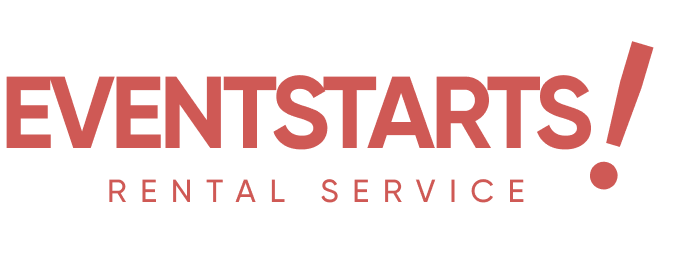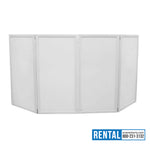You have no items in your shopping cart.
How Laser Lights Are Transforming Live Concert Experiences
In the ever-evolving world of live entertainment, audiences are no longer satisfied with simply hearing great music—they expect to be immersed in a multi-sensory spectacle. From elaborate stage designs and high-definition LED walls to fog machines and flame jets, the modern concert is a curated explosion of light, color, and movement. At the heart of this visual revolution lies one of the most powerful tools in a production designer’s arsenal: Laser Lights.
These brilliant beams of coherent light have transformed the way live shows are designed and experienced. What was once a niche element in clubs and raves has now taken center stage at stadium concerts, music festivals, and even orchestral performances. In this article, we’ll explore how lasers have reshaped audience expectations, the technology behind them, and how event producers are using them to take live music to new heights.
The Rise of Visual Storytelling in Concerts
Today’s audiences crave more than music—they want a story, an atmosphere, an emotional journey. Lighting and visual effects have become just as important as the setlist in crafting that experience. With high-definition video, intelligent lighting fixtures, and automated stage movement becoming industry standards, Laser Lights provide an extra dimension: intensity.
Lasers have a way of piercing through haze and darkness with precision, creating sharp patterns, tunnels, waves, and bursts of color that ordinary lighting simply can't match. Combined with music, lasers can intensify emotional peaks, synchronize with drum beats, or even outline narrative arcs over the course of a set.
The use of lasers has grown in popularity thanks to artists like Deadmau5, Beyoncé, The Weeknd, Coldplay, and Eric Prydz, who have integrated them into unforgettable stage visuals that blur the lines between concert and performance art.
What Makes Laser Lights Unique?
So what separates lasers from other lighting fixtures? The answer lies in their physical properties.
Unlike conventional light sources like LEDs or incandescent bulbs, lasers emit a focused, coherent beam of light with extremely low divergence. This allows the light to travel much farther and remain concentrated over distance, creating crisp, geometric shapes in mid-air.
Here are some standout characteristics of laser-based lighting:
-
High precision: Lasers can be controlled with millimeter accuracy, making them perfect for drawing shapes, logos, and effects.
-
Long-range visibility: A laser beam remains focused even across large venues or outdoor fields.
-
Monochromatic brilliance: While RGB lasers offer full-spectrum color, each laser diode emits one pure wavelength, resulting in ultra-saturated colors.
-
Dynamic movement: Fast-moving mirror systems allow laser beams to draw patterns, scan across the crowd, or simulate motion in three-dimensional space.
These attributes make lasers not just another light source, but a design medium in their own right.
The Technology Behind the Beams
Modern show lasers rely on a combination of components that work together to create the stunning visuals you see on stage:
1. Laser Diodes
These are the source of the light. Red, green, blue, and violet laser diodes are combined to create a full palette of colors.
2. Scanning Mirrors
Also known as galvanometers or "galvos," these tiny motors rapidly tilt mirrors to direct the laser beam along x- and y-axes. This motion allows the beam to create complex shapes and animations.
3. Control Software
DMX or ILDA-compatible laser control software is used to design and trigger specific effects. Technicians can synchronize these with music using timecode, MIDI, or beat analysis.
4. Atmospheric Effects
Lasers are most visible when there are particles in the air to reflect the light. Haze machines are used to create the right conditions without overpowering the venue with fog.
Creating Immersive Moments
What sets lasers apart is their ability to transform space. A well-timed laser cue can envelop the audience in a tunnel of color, slice through smoke with hypnotic rhythm, or create the illusion of a ceiling collapsing in a burst of energy.
Here are a few ways laser designers use this power:
Aerial Effects
Beams that shoot through the sky above the crowd create a canopy of light, producing a sense of awe and immersion. This is especially effective at outdoor festivals where the audience spans hundreds of meters.
Audience Scanning
With safety measures in place, low-power beams can be projected through the crowd, giving each viewer the feeling of being inside the visual world of the performance.
Graphic Projection
Lasers can be used to project logos, text, or animations onto scrims, walls, or buildings. These graphics are sharp and luminous, making them a popular choice for branding during concerts and special events.
Synchronized Movement
Laser patterns can be precisely synced with audio cues, building anticipation and releasing energy in perfect harmony with the music. This turns light into choreography.
Safety and Regulation
As exciting as lasers are, they also come with responsibilities. Because laser beams can be harmful to eyes or even cause burns at high intensities, strict safety protocols are followed during every show.
Key Safety Practices Include:
-
Using audience-safe lasers under 3.5mW/cm² intensity
-
Installing beam stop masks and termination zones
-
Scanning above audience heads or in controlled zones
-
Hiring certified laser safety officers (LSOs) for large-scale events
In many countries, including the United States and most of Europe, laser shows must be approved by national safety bodies (like the FDA in the U.S.) to ensure proper use. This has led to the development of safer, more intelligent control systems.
Why Artists and Event Planners Love Lasers
There are several reasons why laser effects have become such a staple in modern live shows:
Versatility
Laser effects can match any genre—from EDM to metal to classical. They can be subtle and elegant or intense and explosive. This makes them ideal for custom stage designs.
Efficiency
Laser fixtures use less power than many traditional light arrays while producing a more intense beam. Fewer units can accomplish more visual impact, especially when combined with haze.
Portability
Most modern laser systems are compact and modular, making them easy to transport, rig, and program on the fly.
Return on Investment
Though professional laser systems come with a higher initial cost, their reusability and audience impact make them highly cost-effective for touring acts and event organizers alike.
Real-World Case Studies
1. Coldplay’s Stadium Tour
Coldplay’s latest tours feature intricate light shows with audience wristbands, drones, and laser elements. The lasers cut through the air above tens of thousands of fans, creating vast geometric shapes that tie directly into the band’s emotionally charged performances.
2. Eric Prydz’s “HOLO” Show
This immersive audio-visual experience pushes laser tech to its limits, incorporating holographic visuals, synchronized laser grids, and environmental effects that fully immerse the crowd in a digital dreamscape.
3. Coachella & Ultra Music Festival
Major festivals regularly feature Laser Lights as a central part of their nighttime performances. Their ability to reach large crowds and create powerful moments makes them essential for headline sets.
Future Innovations in Laser Show Design
Laser technology is advancing rapidly, with manufacturers and designers constantly pushing the boundaries of what’s possible. Here are some trends to watch:
-
Interactive laser effects that respond to audience movement or sound
-
AR/VR integration, merging physical lasers with augmented digital elements
-
Drone-laser combinations, creating moving canvases in the sky
-
Eco-friendly designs with lower energy consumption and longer diode lifespans
As the demand for immersive entertainment continues to grow, the role of lasers in live performance will only expand.
Conclusion
In today’s competitive event industry, delivering a powerful and unforgettable audience experience is more important than ever. Laser Lights have emerged as a transformative force in the world of concert production, offering unmatched precision, visual intensity, and flexibility.
From stadium tours to intimate theater shows, lasers have redefined what’s possible on stage—and they’re only getting more advanced. As the technology becomes more accessible and creative boundaries continue to be pushed, one thing is certain: the future of live music will be brighter, bolder, and more immersive than ever before.
To bring the magic of lasers to your next event, explore professional equipment and staging solutions at EventStarts.com — your trusted source for cutting-edge event production.






